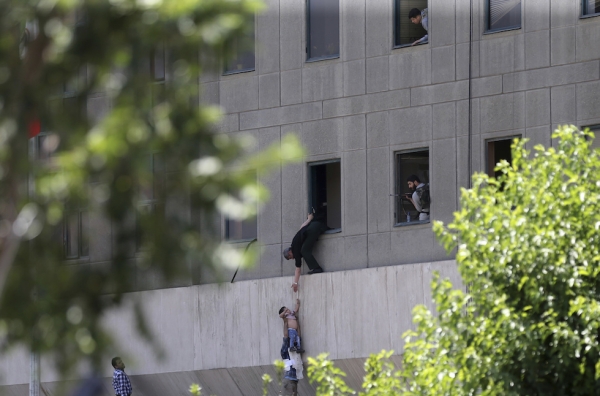On June 7, the extreme Islamist group Islamic State (ISIS) targeted civilians in Tehran, the capital of Iran, in two coordinated attacks which killed at least 13 and injured over 40 people. At 10.30 am (local time), four armed men, some dressed as women, entered the Iranian parliament, shot guards and civilians and took hostages. Gunfire was heard from outside. Mobile phone contact was lost inside and all the gates were closed. People inside the parliament panicked and escaped from windows. It took around five hours before Iranian security forces managed to end the assault: they killed all the attackers but one, who activated an explosive belt. At the same time, around 20 kilometres from the parliament, two other armed assailants (a man and a woman) hit the Ayatollah Khomeini mausoleum, a place dedicated to the founder of Islamic Republic of Iran and a popular destination for tourists and pilgrims. One attacker detonated an explosive; it is not clear if the other one committed suicide or was killed by Iranian soldiers. All the assailants were Iranian ISIS recruits, as confirmed by Reza Seifollhai, the deputy head of Iran's National Security Council.
ISIS claimed responsibility for both attacks, its first ones in Iran, sharing a video recorded by terrorists inside the parliament and threatening more violent actions against the Shiite population. As two of the major denominations within Islam, the conflict between Shiite and Sunni Muslims is particularly tense in the Middle East. Iran is a mostly Shiite Muslim country, whereas ISIS militants are Sunni and consider Shiite Muslims as heretics.
The tension in the Middle East has increased after the terrorist attacks. Iran's Revolutionary Guards Corps (IRGC), a branch of Iran's Armed Forces, blamed Saudi Arabia and the United States for the attacks, as they occurred just one week after the meeting between Saudi King Salman bin Abdulaziz and the President of United States Donald Trump: "They are involved in this savage action", the IRGC said in a statement. Saudi Minister of Foreign Affairs Adel al-Jubeir replied there is no evidence Saudi nationals were involved. President Trump expressed grief for the victims, adding that states sponsoring terrorism risk falling victim to what they promote.
To read more, visit:
http://www.bbc.com/news/world-middle-east-40184641
http://www.ilpost.it/2017/06/08/attentato-isis-teheran-iran/
https://www.theguardian.com/world/2017/jun/07/shootings-iranian-parliament-khomeini-shrine
http://www.reuters.com/article/us-iran-security-idUSKBN18Y0HV
https://www.nytimes.com/2017/06/07/world/middleeast/iran-parliament-attack-khomeini-mausoleum.html
http://www.aljazeera.com/news/2017/06/iran-accuses-saudi-arabia-tehran-attacks-170607183551328.html
http://foreignpolicy.com/2017/06/07/islamic-state-attacks-in-iran-leave-12-dead-over-40-injured/







